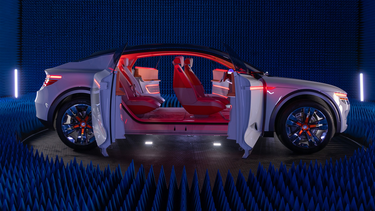This Snapdragon Ride Flex could be your journey of the future
Unveiled at CES, it's actually meant to show off the software needed for self-driving cars

Article content
If you’re not in the mood to talk to a driver on your next ride-hail or taxi trip, help is on its way. Unveiled today at the Consumer Electronics Show (CES) in Las Vegas, the Snapdragon Ride Flex could be just what you’re looking for.
Advertisement 2
Article content
Mind you, a Snapdragon itself won’t show up at your door — it’s just a demonstration project for what hardware-and-software company Qualcomm, based in California, is planning to offer to companies that are working on the real thing. But it’s still an interesting way to show off some of the building blocks needed if vehicles are ever going to become fully autonomous.
Of course, you can’t really strut out onstage and show off a computer chip to your audience, so Qualcomm created a vehicle to illustrate what it’s offering. It’s a blend of odd and interesting, with suicide doors, LED strip lighting above some run-of-the-mill taillights, and styling cues that seem taken from a number of existing vehicles — rather mindful of the generic vehicles seen on the street in an “artist’s rendering” of a new building that’s going up in a city.
Advertisement 3
Article content
Recommended from Editorial
The company already produces Snapdragon Ride Platforms, used by some automakers as the basis of their advanced driver assistance systems (ADAS) and automated driving features. The new features in the CES concept car are aimed at cars that will be built globally for 2025, and ready to be fit to everything from entry-level vehicles to premium ones. The systems work with artificial intelligence, along with sensors such as cameras, radar, and lidar, to eventually glide along the street with no one at the wheel.
Along with that end goal, the Snapdragon concept also shows off such available-now technology as high-end graphics for instrument clusters and infotainment systems, rear-seat entertainment screens, and premium audio. Of course, all of this is intended for upgrade into the future, with connected and cloud services eventually creating even more personalized and immersive infotainment for the vehicle occupants. That can include facial recognition that adjusts the seat and climate when you get in – even if you’ve swapped the driver’s seat for a passenger chair – or automatically paying for parking using your credit account, or even ordering something you’ve seen on the infotainment screen.

















